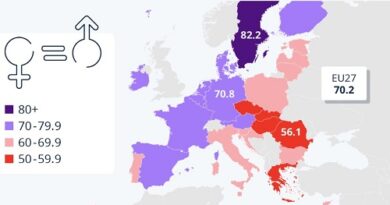The uncontrollable “push” to emigrate
Third chapter of the publication, in ten chapters both in Italian and English, of the academic presentation that our periodic collaborator Goffredo Palmerini held in L’Aquila on November 3rd, on the occasion of the CRAM Assembly (Regional Council of Abruzzesi in the World). The report is entitled “Historical notes on Italian emigration” and traces the history of the Italian Diaspora.
L’AQUILA – (continued… part three) Perhaps, today, in the face of this “mass exodus” of humanity, people might conclude that government unresponsiveness to the phenomenon would naturally encourage the silent and obstinate flight of those who did not even have the essentials for survival.
In this context, there is no need to investigate whether or not there was some courageous, entrepreneurial drive in those Italians who, living in the midst of self-evident miserable conditions, also had to build a unified and homogeneous governing structure. In other words, fashion a State not only in words, but one that would have the minimum capacity to recognize of emigration as a national problem and as a now disturbing social issue, as a silent and disdainful expression of non confidence in the promises of the new State. At most it could appear as a disturbing phenomenon in a still uncertain and immature settling phase.
And so emigration emerged branded with a characteristic, lasting for more than a century, of an uncontrolled and uncontrollable “push“. Emigration was the product of the lack of an adequate government planning both to support those leaving and for the reabsorption of the emigrated forces, in the context of a planned economic policy that would at least govern emigration by helping it in the expatriation phase as well as in an [eventual] return phase, with a series of services, protections and infrastructure. Absent such programs, leaving the country was a risky adventure and returning would involve an equally laborious reintegration.
The push to emigrate even had its “promoters”, such as shipping line agents and representatives of overseas interests who sold the suggestion of fortunes to be made to residents of the most remote towns in Italy.
After [close to] a century, there was no longer any talk of fortunes to be made [by scraping the streets paved in gold]. The resumption of emigration, from 1946 onward, was linked to working relationships especially with the extractive industries. At most, we hoped for advantageous contracts, especially for mine workers, compared to the meager wages available in Italy at the time: The tragedy of Marcinelle, in 1956, would reveal to us the human costs.
And yet the character of the Italian emigrant remains clear: sometimes a pioneer, an adventurous person and a champion of courage and sobriety; in other cases, people who were looking for the security of daily bread, job stability and some form of social protection. From the unification of Italy to today, migrations abroad have certainly represented a factor of primary importance in the socio-economic evolution of the country. However, it was not until the 1970s that a reversal of trend begin to emerge, revealed first by the mitigation of expatriation factors and then by the transition, most unforeseen and unexpected, from a country of emigration to a country of immigration.
Nonetheless, in the first decade of the 2000s, particularly after the global economic crisis of 2007-2008, emigration reared its head once again in Italy, with departures that sometimes reached 150 thousand exits per year. This time, it involved young people with university education who within the borders of Italy could not find job opportunities. In more recent years, annually, there have been around 130 thousand such exoduses.
Returning to the period in question, the end of the Second World War marked the start of a further phase of intense emigration from Italy for a future abroad.
(continues…)
Translation in English by the Hon. Joe Volpe, Publisher
The pic above is “Controlli sanitari” from the book “La Merica. Emigrazione dei Monteleonesi verso gli Stati Uniti dal 1882 al 1924” by Antonio De Vitto



